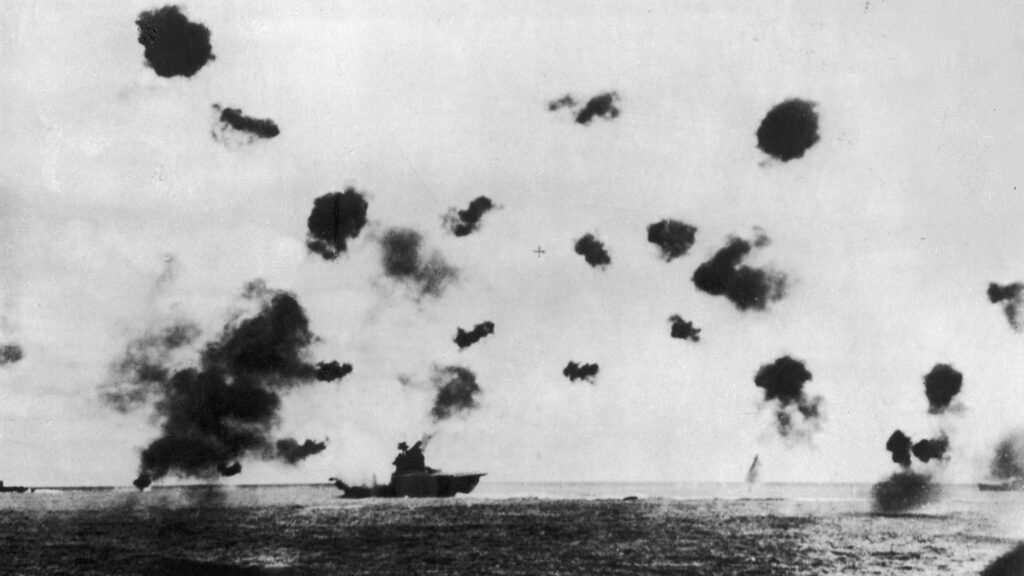The Battle of Midway, fought in June 1942, was a decisive engagement in World War II’s Pacific Theater. This article provides an overview of the battle and its significance. Following Japan’s surprise attack on Pearl Harbor, the United States aimed to regain control in the Pacific, while Japan sought to neutralize the U.S. naval presence. The U.S. intercepted Japanese naval communications, giving them crucial intelligence to prepare a defense. The battle began with a Japanese air raid on Midway Atoll, but the U.S. had already prepared a strong defense. The turning point came when U.S. dive bombers damaged four Japanese carriers. The battle demonstrated U.S. naval supremacy and severely hampered Japan’s ability to conduct offensive operations for the rest of the war. The Battle of Midway marked a major turning point in the war and is studied by military historians for its intelligence, strategy, and resilience.
The Battle of Midway: Naval Warfare that Shattered Japanese Ambitions
Introduction
The Battle of Midway, which took place between June 4th and June 7th, 1942, was a pivotal engagement in the Pacific Theatre of World War II. Fought between the United States and Japan, this battle proved instrumental in severely damaging the Japanese fleet and thwarting their ambitions to expand their control in the Pacific.
The Strategic Context
Following Japan’s surprise attack on Pearl Harbor in December 1941, the United States was determined to retaliate and regain its footing in the Pacific. The Japanese, on the other hand, aimed to neutralize the United States’ naval presence to secure their dominance in the region.
Preparation and Intelligence
The United States had intercepted and decrypted Japanese naval communications, providing crucial intelligence on Japan’s plans. Admiral Chester W. Nimitz, the commander of the United States Pacific Fleet, used this information to prepare a defense that would exploit Japanese vulnerabilities.
The Battle Begins
The battle commenced on June 4th, 1942 when Japanese aircraft carriers launched an air raid on Midway Atoll, a strategic U.S. outpost located northwest of Hawaii. However, the U.S. had already prepared a strong defense and ambushed the Japanese carrier force in return.
Decisive Moments
The turning point in the battle came when U.S. dive bombers, despite heavy anti-aircraft fire, managed to inflict significant damage on the Japanese carriers. The sinking of four Japanese carriers in quick succession left the Japanese fleet in a weakened state and turned the tide in favor of the United States.
Importance and Legacy
The Battle of Midway not only demonstrated U.S. naval supremacy in the Pacific but also dealt a severe blow to Japanese ambitions. With the loss of their carriers, Japan’s ability to conduct offensive operations was severely hampered for the rest of the war.
Conclusion
The Battle of Midway is remembered as a major turning point in World War II, marking the decline of Japanese expansion and the rise of U.S. power in the Pacific. This extraordinary naval battle showcased the importance of intelligence, strategy, and resilience in warfare, and its legacy continues to be studied and admired by military historians today.
